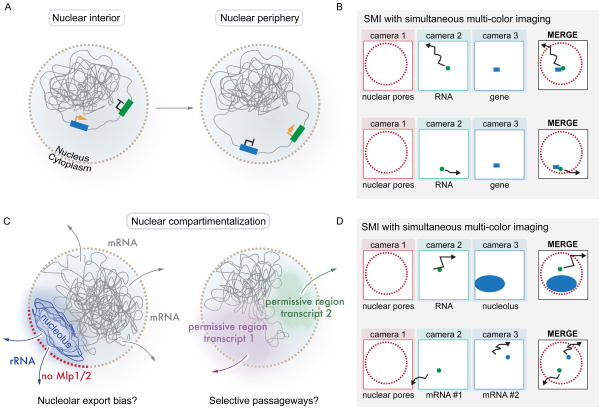Figure 2.
Regulating gene expression: A role for the nuclear periphery and NPCs? A: Transcriptional activation (blue with yellow arrow) and silencing (green with black arrow) have both been associated with peripheral gene positioning. The molecular basis for such chromatin rearrangements and the local environment this places a gene in to alter gene expression remains largely unknown, as does the impact gene tethering has on mRNA export. B: SMI techniques using multi-camera setups can determine the dynamic position of a transcript relative to its gene locus in different cellular conditions. C: Genome organization may also affect the transport routes taken by different classes of RNAs. rRNA export might be biased to NPCs associated with the nucleolus (blue), and mRNA export even disfavored, due to the different biophysical properties of the nucleolus or function of nearby NPCs (exemplified by the lack of Mlp1/2 in NPCs close to the nucleolus). Other genomic regions might play a similar role by facilitating local environments that select for distinct mRNPs. D: SMI can unravel such gene expression features through differential labeling of sub-nuclear structures and/or different classes of mRNAs.

